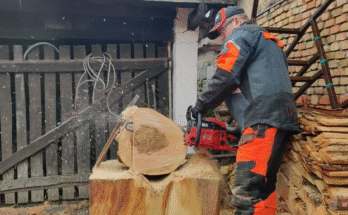

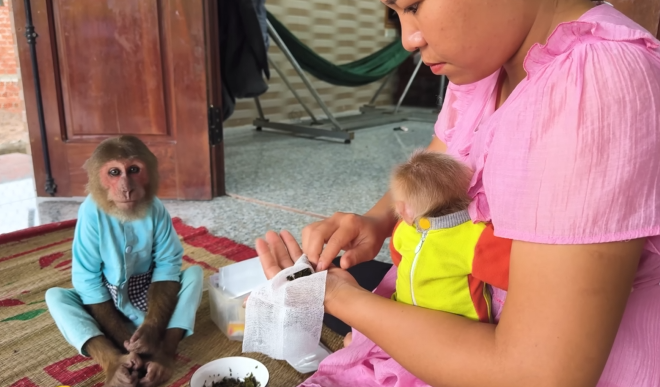
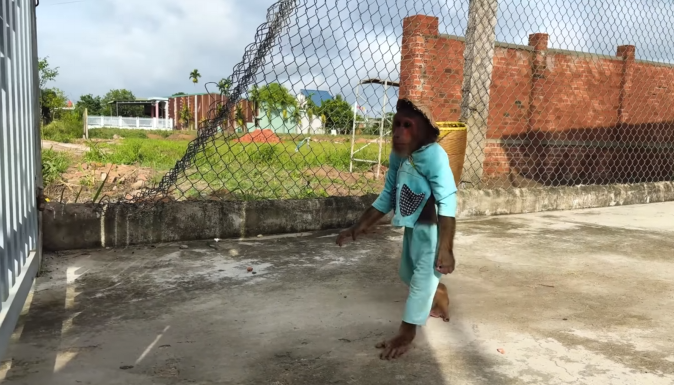
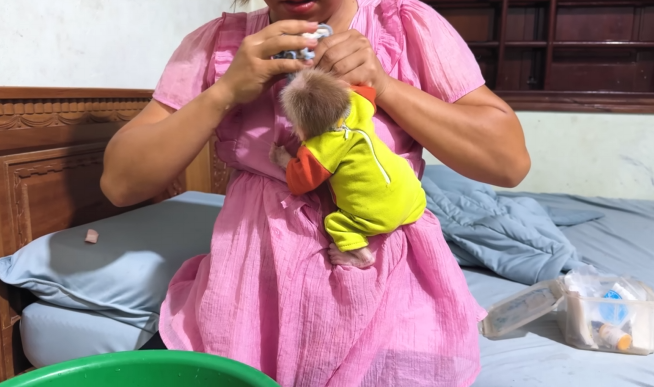
In a quiet farming village nestled between the mountains and rice fields, lived a kind-hearted man named Cutis. Known throughout the region for his wisdom, patience, and unique way with animals, Cutis had always lived a simple but meaningful life. He had a small farm filled with chickens, goats, a pair of golden retrievers, and lush vegetable patches. But one day, everything changed when he discovered a tiny, helpless baby monkey abandoned near the edge of the forest.
The monkey, barely the size of a small melon, was shivering, weak, and clearly in distress. Without hesitation, Cutis scooped the fragile creature into his arms, wrapped it gently in his shirt, and took it home. From that moment on, their bond began.
What made Cutis special wasn’t just his love for animals—it was his clever way of understanding their needs and communicating with them. He didn’t just treat the baby monkey like a pet; he treated it like family. He named her Mimi and began designing her daily care with the same level of attention and intelligence he used to manage his farm.

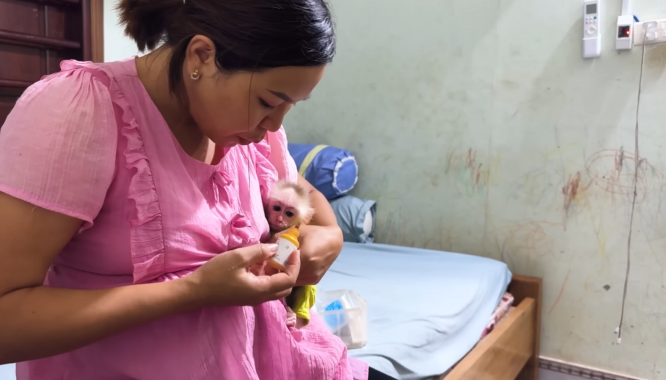

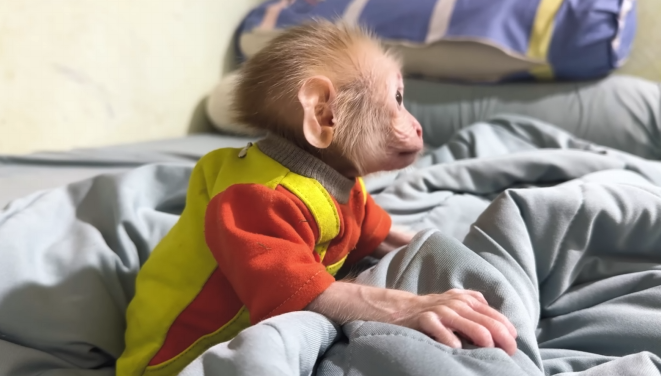
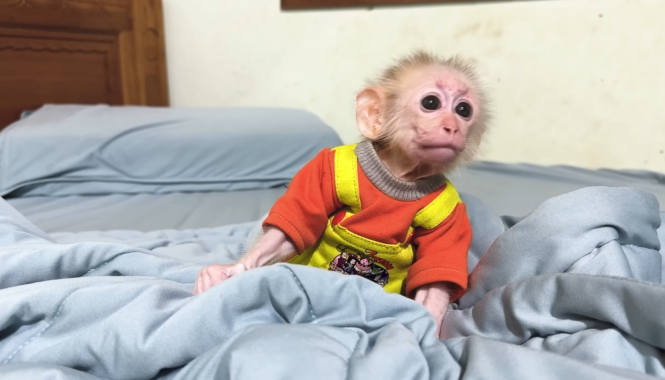

A Special Diet Plan
Understanding that Mimi needed more than just bananas, Cutis researched the nutritional needs of baby monkeys. He carefully blended goat milk with mashed sweet potatoes and soft fruits to ensure she had enough energy and nutrients to grow strong. He even added a few drops of coconut water to keep her hydrated in the tropical heat.
Feeding time was always quiet and focused. Cutis would gently hum as he fed Mimi from a small spoon, building trust through calm repetition. Within a few weeks, Mimi began reaching out for the spoon herself, eager and full of life.
Monkey School with Cutis
Cutis, always thinking one step ahead, knew that Mimi needed more than love and food—she needed to learn. He turned their backyard into a little “monkey school.” Using everyday tools, he taught her how to recognize simple objects and associate hand signals with meanings.
For example, when Cutis wanted Mimi to come to him, he would tap his chest twice and smile. To signal playtime, he would wave a leaf in the air. Over time, Mimi began to respond intelligently, showing signs of comprehension and even creativity.
He also used songs and rhythms to help teach coordination. When he tapped on drums or wooden bowls, Mimi would copy the beat by clapping or jumping in time. It was their form of bonding and also a clever way to enhance her cognitive skills.
A Friend to All Animals
Mimi wasn’t just growing—she was thriving. Thanks to Cutis’ gentle leadership, she also became friends with the other animals on the farm. She would ride on the back of one of the golden retrievers, nap beside the goats, and even sit quietly among the chickens.
Cutis always watched carefully. He gently corrected her if she got too curious with the eggs or chased the goats too much. But he did so not with shouting, but with redirection—offering a toy, a snack, or a playful game to refocus her energy.
The animals respected her, and more importantly, they trusted Cutis. Because he treated all of them with fairness and care, they accepted Mimi as one of their own.
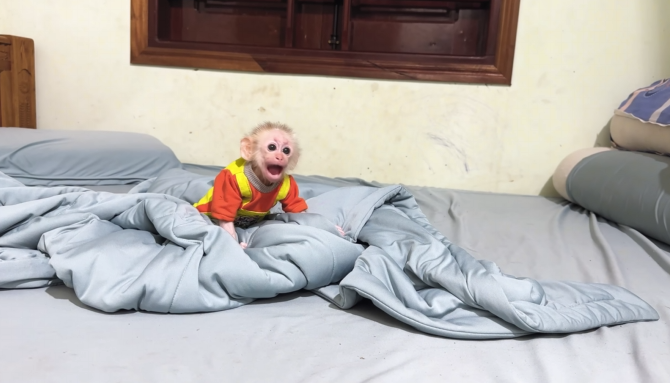
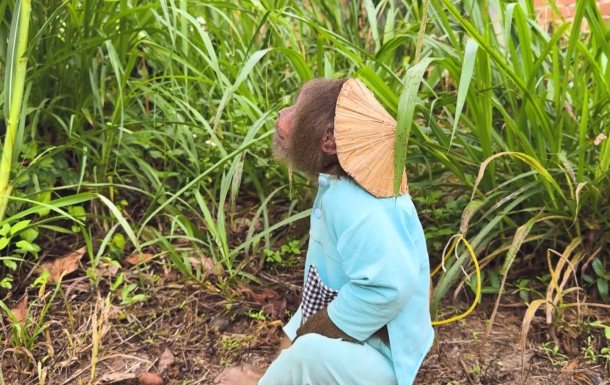
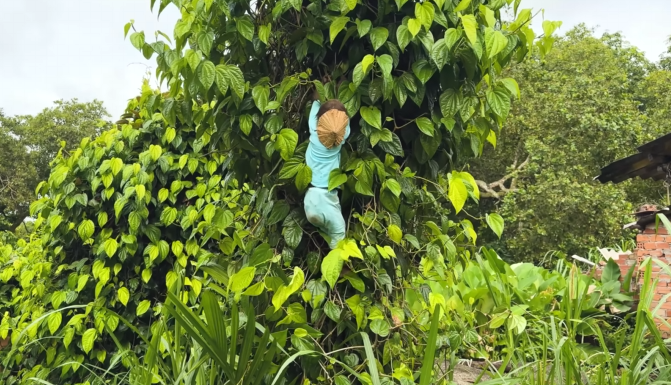

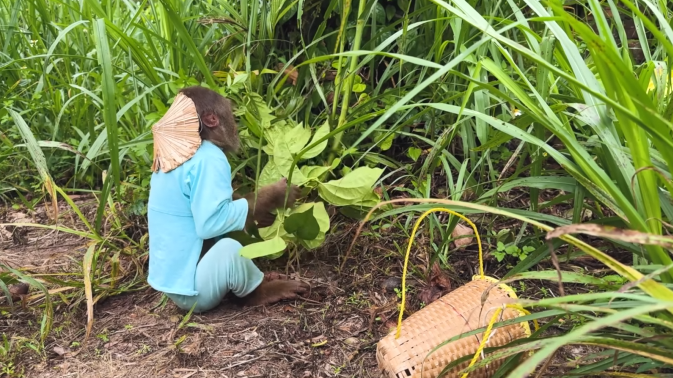
Healing Through Connection
What amazed the villagers most was not just that Cutis had managed to care for a wild animal—it was how deeply connected the two had become. Mimi followed Cutis everywhere, perched on his shoulder or holding onto his hand as he walked through the fields.
When he worked, she imitated. If he planted seeds, she would dig tiny holes beside him. If he watered the crops, she would splash water with a little leaf. Cutis never forced her to do anything. Instead, he made every activity fun, like a game or adventure.
One rainy afternoon, a local veterinarian visited the farm to check on the animals. He was amazed at how healthy and well-adjusted Mimi was. “This monkey should have died weeks ago,” he said in astonishment. “But you’ve given her a second chance.”
Cutis simply smiled and patted Mimi on the head. “She’s family now,” he replied.
Teaching the Community
As word spread, children and families from nearby villages began visiting Cutis’ farm to witness this unique bond. Parents brought their children to learn about animal kindness, while farmers asked for advice on how to care for injured animals they’d found.
Cutis never claimed to be a teacher, but through his quiet wisdom and clever methods, he became one. He showed others how empathy, patience, and consistency could create miracles—not through force, but through gentle intelligence.
He taught that caring for animals wasn’t about control, but cooperation. It was about listening to their signals, adapting routines to their needs, and being present every single day.
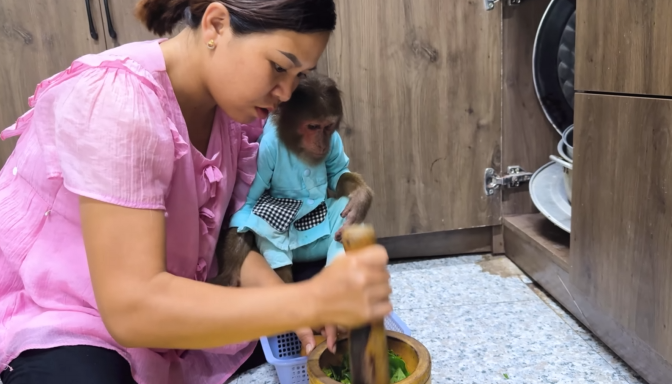


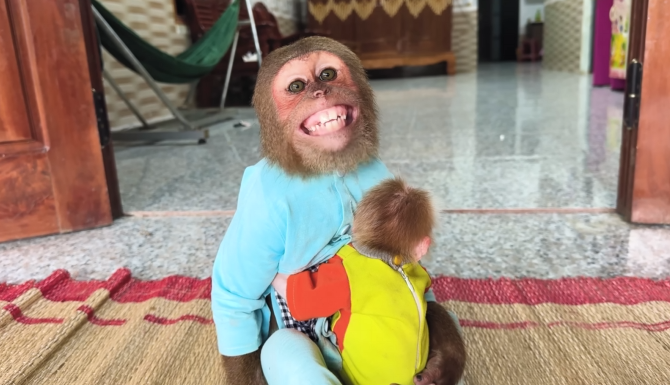

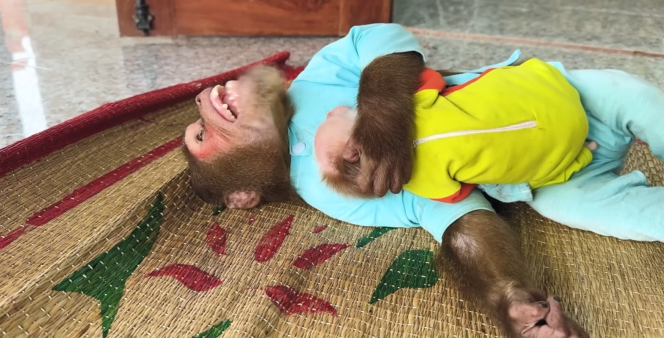
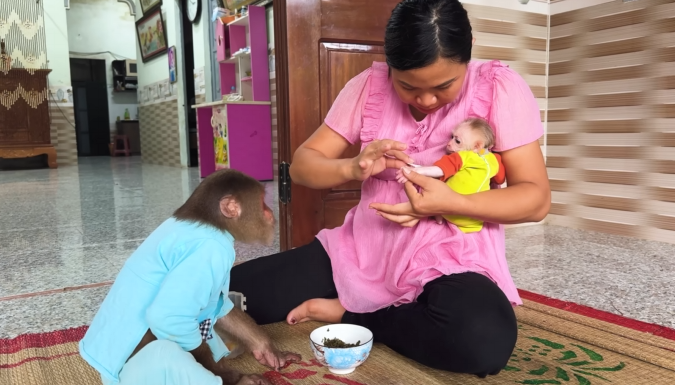
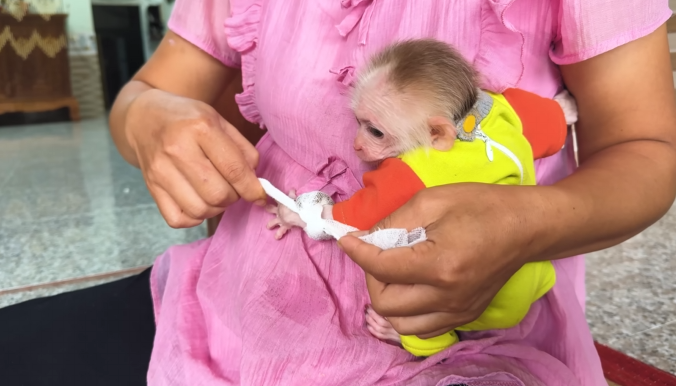
A Life Changed Forever
Mimi is no longer the weak, frightened monkey that Cutis found at the edge of the forest. Today, she is energetic, playful, and deeply bonded with the man who saved her. She still sleeps in the same cozy corner of the house, but now with a stuffed toy and a blanket Cutis made just for her.
For Cutis, life has become richer. He wakes each morning with Mimi tapping on his nose, ready for the day’s adventures. Together, they plant, explore, play, and teach. Their connection is a beautiful reminder of what’s possible when love meets intelligence.
Conclusion
Smart Cutis didn’t just save a baby monkey—he gave her a life filled with love, purpose, and joy. His thoughtful and special way of care not only changed Mimi’s fate but also inspired a community. His story teaches us all that when we combine compassion with cleverness, we can build bridges between species, transform lives, and create bonds that last a lifetime.
